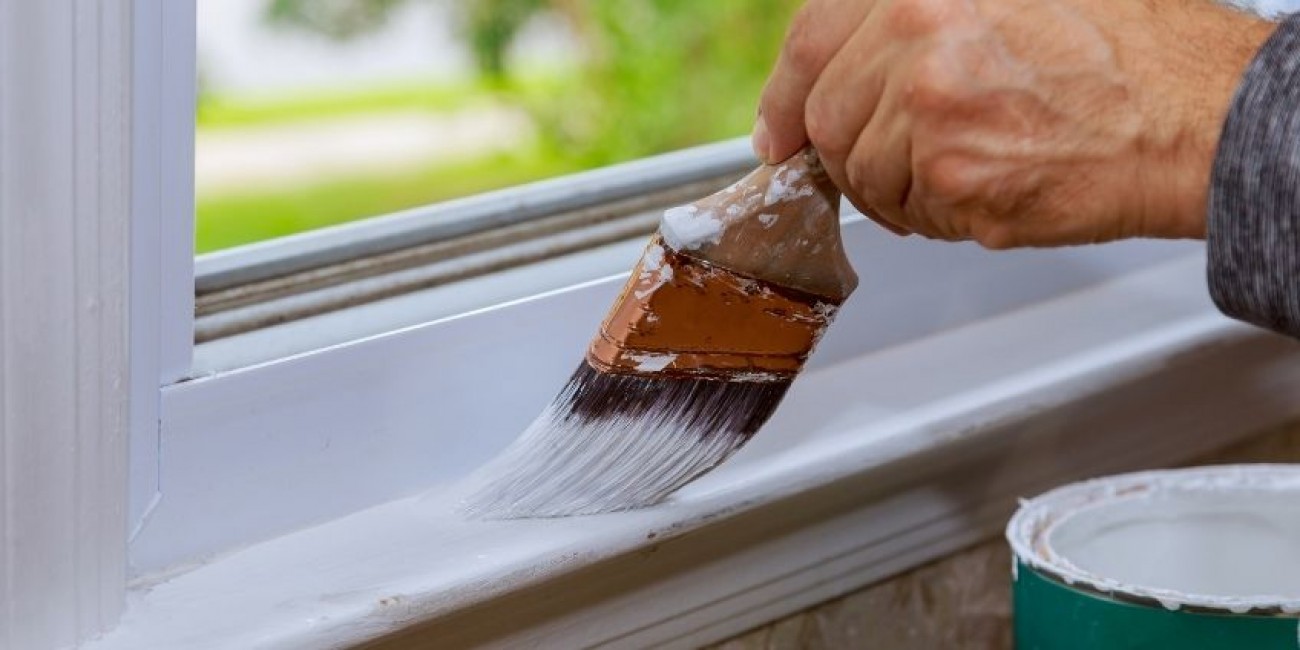Tips for Cutting in When Painting Trim

Rolling out yards of painter’s tape is the norm when it comes to painting trim. After all, no one wants to get wall paint on their white or brown trim. But many professionals forgo using tape at this stage in the process. As a DIYer, this idea may seem intimidating, but it’s far from impossible. All it takes is a technique called “cutting in.”
What Is “Cutting In”?
Cutting in involves using a hand brush to paint the walls around your trim in straight lines without using painter’s tape. With practice, a steady hand, and our tips for cutting in when painting trim, you’ll paint like the pros in no time.
How To Cut in Paint
Use an Angled Brush
Since your goal is to paint a perfectly straight line, you may initially try a straight-edged brush. But you’ll end up holding the brush at an angle, especially when you paint in a vertical line along doors and windows. Using an angled brush will help you paint more precise lines.
Maximize Your Light
When artists set out to draw or paint a picture, they tend to set up their work by a natural light source or use specially made artist lamps. This allows them to paint with greater precision. The same is true for cutting in. To improve your ability to paint, make sure you keep windows open and turn on all the lights in the space.
Pro Tip
If you have a headlamp made for hiking, wear it while you cut in. It’ll provide additional light for your work space while keeping your hands free.
Paint Next to the Edge First
When you go to cut in, don’t start by painting the space directly beside the trim. Instead, load your brush and paint a straight line next to the area you want to paint, leaving a space right next to the trim. This swath acts as a paint “reservoir.” From here, it makes it easy to use the brush to slowly spread the paint to cover the area where you want to cut in.
Cut in First
Once you become better at cutting in, you can do it without getting any paint on your trim. However, if you’re new, it may take pressure off of you to focus on cutting in before you go to repaint your trim. That way, you can paint over any mistakes you make. If you plan on cutting in before you paint your trim, make sure you overlap your wall paint slightly on the trim.
No matter your experience, cutting in can give a professional-looking finish to your walls. And when it comes time to repaint your trim, ECOS Paints has the zero VOC* furniture and trim paint you need for a perfect finish.
Zero VOC - Conforms to CDPH 01350 (VOC emissions test taken at 11, 12, & 14 days for classroom and office use).


























